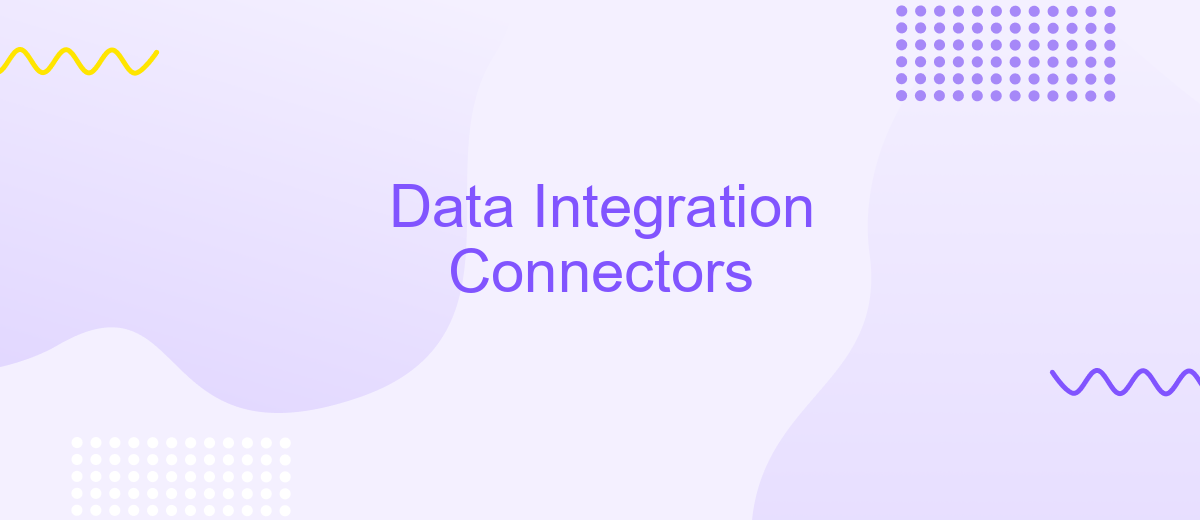Data Integration Connectors
Data integration connectors are essential tools that enable seamless communication between disparate systems and applications. By facilitating the efficient transfer and synchronization of data, these connectors help organizations streamline operations, enhance decision-making, and maintain data consistency. In this article, we will explore the key features, benefits, and best practices for implementing data integration connectors in various business environments.
Introduction
Data integration connectors play a crucial role in today's digital landscape, enabling seamless communication between disparate systems, applications, and data sources. These connectors facilitate the transfer of data, ensuring that information flows smoothly and accurately across various platforms. As businesses increasingly rely on multiple software solutions, the need for effective data integration becomes ever more important.
- Streamlined data flow between different systems
- Improved data accuracy and consistency
- Enhanced operational efficiency
- Reduced manual data entry and errors
One of the leading services in this domain is ApiX-Drive, which offers robust tools for setting up and managing integrations effortlessly. With ApiX-Drive, businesses can automate data transfers, synchronize information across platforms, and ensure that their systems work harmoniously together. This not only saves time but also enhances the overall productivity and reliability of business processes.
Types of Data Integration Connectors

Data integration connectors come in various types, each designed to facilitate the seamless transfer and synchronization of data between different systems and applications. One common type is the API-based connector, which uses Application Programming Interfaces to enable real-time data exchange. These connectors are highly versatile and can be customized to meet specific business needs. Another type is the ETL (Extract, Transform, Load) connector, which is ideal for batch processing and moving large volumes of data from one system to another. ETL connectors are particularly useful for data warehousing and analytics purposes.
Additionally, cloud-based integration platforms like ApiX-Drive offer a range of pre-built connectors that simplify the process of integrating various applications and services. These platforms often provide user-friendly interfaces and automation features, making it easier for businesses to manage their data flows without extensive technical expertise. Other types include database connectors, which directly connect to databases to facilitate data migration and synchronization, and file-based connectors, which handle data exchange through file formats like CSV or XML. Each type of connector plays a crucial role in ensuring that data is accurate, consistent, and readily available across all systems.
Benefits of Using Data Integration Connectors

Data integration connectors play a crucial role in modern businesses by enabling seamless data flow between various systems and applications. These connectors help organizations streamline their operations, improve decision-making, and enhance overall productivity.
- Efficiency: Automating data transfer processes reduces manual work and minimizes errors.
- Real-time Access: Connectors ensure that data is updated in real-time, providing accurate and timely information.
- Scalability: They allow businesses to easily scale their operations by integrating new systems as needed.
- Cost Savings: Reducing the need for custom integration solutions can significantly lower operational costs.
- Improved Collaboration: By centralizing data, teams can work more collaboratively and make better-informed decisions.
Services like ApiX-Drive offer user-friendly platforms to set up and manage data integration connectors without requiring extensive technical knowledge. This allows businesses to quickly implement integrations and focus on their core activities, driving growth and innovation.
Challenges of Using Data Integration Connectors

Data integration connectors offer numerous benefits, but they also present various challenges. One significant issue is the complexity of setting up and maintaining these connectors, especially when dealing with diverse data sources and formats. This complexity can lead to increased costs and resource allocation for businesses.
Another challenge is data security and privacy. Ensuring that sensitive information remains protected during the integration process is paramount. Any vulnerabilities in the connectors can expose data to potential breaches, making robust security measures essential.
- Compatibility issues with legacy systems
- Scalability concerns as data volumes grow
- Data quality and consistency maintenance
- High initial setup and ongoing maintenance costs
Despite these challenges, solutions like ApiX-Drive can simplify the integration process. ApiX-Drive provides a user-friendly platform that allows businesses to connect various applications and automate workflows without extensive technical expertise. This helps mitigate some of the complexities and costs associated with data integration connectors.
Best Practices for Using Data Integration Connectors
When using data integration connectors, it is crucial to ensure data accuracy and consistency. Start by defining clear data governance policies to maintain data quality across different systems. Regularly monitor and validate data flows to detect and resolve discrepancies promptly. Using tools like ApiX-Drive can help automate these processes, making it easier to manage data synchronization and reduce the risk of errors.
Another best practice is to prioritize security and compliance. Ensure that all data transfers are encrypted and comply with relevant regulations such as GDPR or HIPAA. Implement access controls to restrict data access to authorized personnel only. Additionally, regularly update and patch your integration connectors to protect against vulnerabilities. Leveraging services like ApiX-Drive can provide additional layers of security and compliance, ensuring that your data integration processes are both efficient and secure.
FAQ
What is a data integration connector?
Why is data integration important?
How can I set up a data integration connector?
What are common challenges in data integration?
Can I automate data integration processes?
Routine tasks take a lot of time from employees? Do they burn out, do not have enough working day for the main duties and important things? Do you understand that the only way out of this situation in modern realities is automation? Try Apix-Drive for free and make sure that the online connector in 5 minutes of setting up integration will remove a significant part of the routine from your life and free up time for you and your employees.

